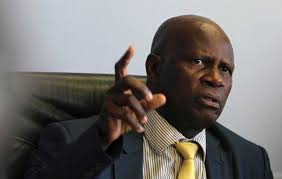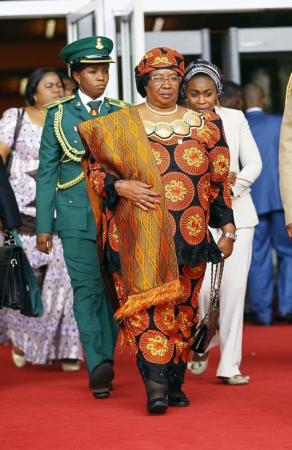It was another conversation about Donald Trump or Ted Cruz. Maybe it was about Hillary Clinton. Honestly, I can’t remember. What I do remember is that it was heated, frustrating, and tiring.
A few hours later I was still thinking about it and still annoyed. On the one hand, I didn’t like the other person’s view, or even her mindset. On the other hand, I didn’t like my response and how I argued with her. As I continued to turn the conversation over in my mind, a single thought kept popping up:
This is not worth the energy I’m spending on it.
Which matters because, I don’t have the energy to spare. And, chances are, you don’t either. In a recent conversation I had with Tom Rath, author of Are you fully Charged? He told me that he has asked more than 10,000 people, “Did you have a great deal of physical energy yesterday?” and just 11% said they did. Which means that 89% of us, are operating without much to spare.
There are two sides to this equation: we can fill our energy tanks more fully and frequently, or we can spend our energy more strategically. One or both of these is crucial if we want to bring our strongest, most productive energy to our most important work and life experiences.
A lot has been written about how to fill our energy tanks more fully. My energy increases when I sleep eight hours, eat healthy foods, stop eating before I’m full, and exercise every day. I also know that having loving relationships, connecting to something bigger than myself, and being emotionally and intellectually engaged all increase my energy.
In other words, I know how to fill my tank. I bet you know how to fill yours too. (But if you need ideas, Tom’s book offers great ones.)
The question, then, is how strategically you are using the energy you have.
The answer for me: not very.
When I’m in a conversation, I almost always share my thoughts. In fact, if I am near a conversation, I often share my thoughts. I do far too much work that others in my organization can (and should) do. I involve myself in decisions that others could make just as well or better. And when I am making decisions, I often delay them, struggling to make them perfect even when there are no right answers. Oh, and I check my email constantly.
Those are just the tip of the iceberg of my visible energy spending patterns. There’s a whole category of invisible ones that sap my energy even more, such as holding on to frustrations and hurts well past their due date and worrying about the outcome of things over which I have no control.
Once I started to pay attention, I began to see how carelessly — how indiscriminately — I spend my energy.
This is worth thinking about because spending our energy wisely is the source of our productivity and happiness.
When I invest my energy, I spend it writing, listening, strategizing, teaching, thinking, planning, offering my opinion selectively and with an outcome in mind, and making decisions swiftly (following the advice of the Jewish medieval sage Maimonides: “The risk of a wrong decision is preferable to the terror of indecision.”).
It is not simply about productivity. I happily invest my energy in ways that simply bring me joy: my children, reading, interesting conversations with friends, and learning new things for fun, to name a few.
The important thing is to be strategic and intentional about where we put our energy so that we apply it to what matters most to us. Here’s how:
- Notice your energy. Where do you spend it? I set my phone to beep at random times during the day as a prompt to notice how I’m spending my energy at that moment — both visibly (doing) and invisibly (thinking). When you look at life with an energy lens, you begin to see things differently. Simply doing this little energy check-in began to change my habits.
- Know what matters to you. Knowing what brings value to your life — joy and productivity — is essential to making smart decisions about where to spend your energy. You might have been in the political conversation I mentioned at the beginning of this article and felt blissful. If so, that could be a great use of your energy. For me, it was energy misspent.
- Plan wise energy investment. Once you know which things matter most to you, schedule as many of them into your life as possible. Literally put them in your calendar. Let them crowd out activities that represent energy leaks. This idea of “crowding out” works for thinking, too. Where do you want to spend your mental energy? I find that perseverating over things (or people) that annoy me is almost never a useful way to spend energy. But thinking about what I can learn from something almost always is. Let your learning mind “crowd out” your complaining mind. Scheduling time at the end of the day to glean insights can be incredibly valuable.
- Most importantly, plan where not to invest. Once you begin to notice your energy, you will clearly see things you do and ways you think that are pointless energy drains. While it’s surprisingly hard to stop doing something midstream, it’s much less painful not to start in the first place. Think of how much easier it is not to turn on the television than to stop watching in the middle of a show. Don’t enter a conversation that you know will rile you up and get you nowhere.
- Finally, don’t spend much time thinking about this. You don’t have to get it right, just better than yesterday. And optimizing your energy expenditure can be its own counterproductive energy drain. Simply pull yourself out of one useless conversation, stop yourself from responding to one silly email, let go of one nagging thought, and you’ll be a more intelligent investor of your energy.
Sometimes the solution to a problem isn’t to do more. It’s to do less.
Source: Harvard Business Review



